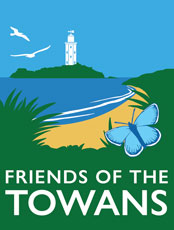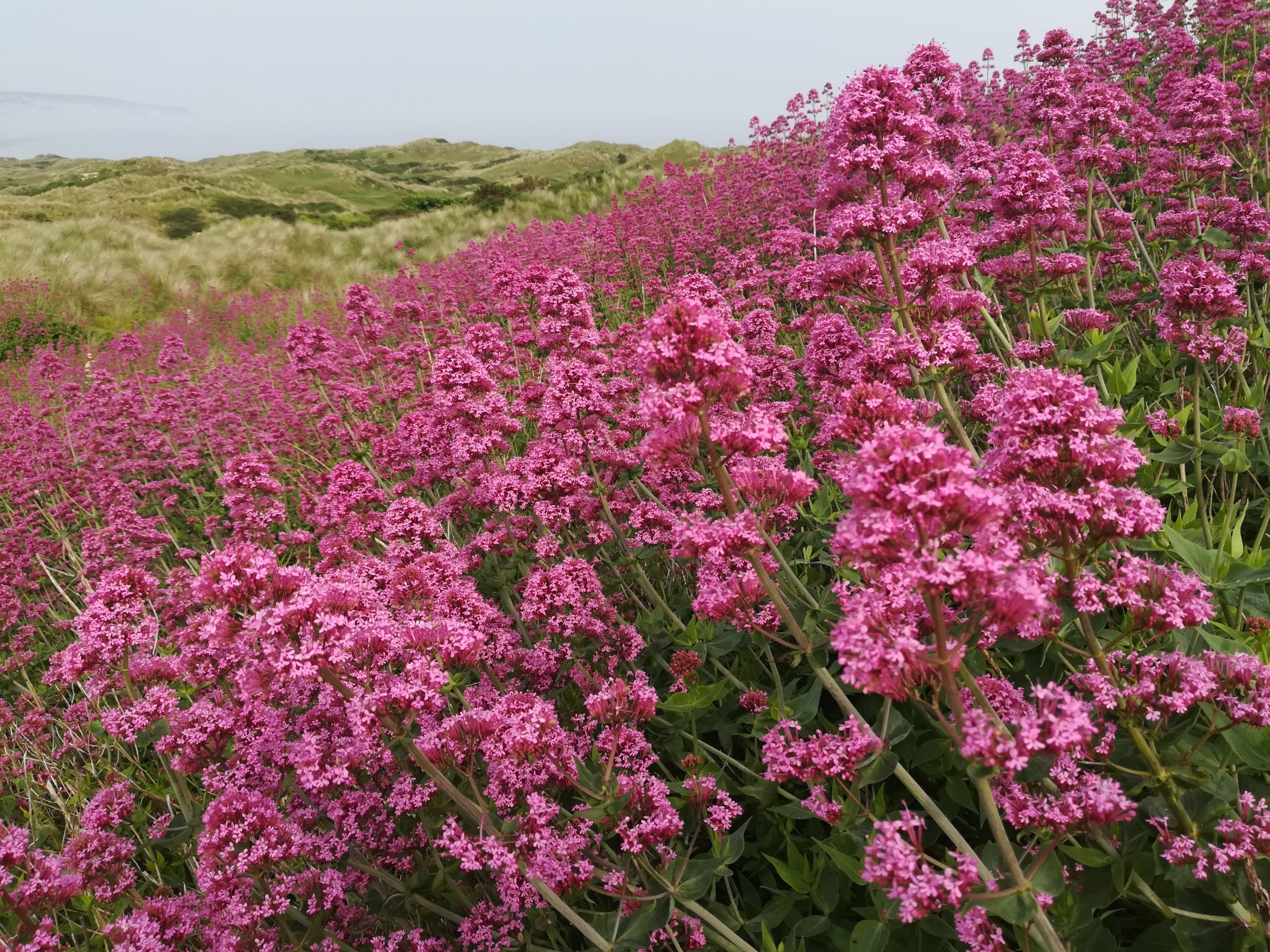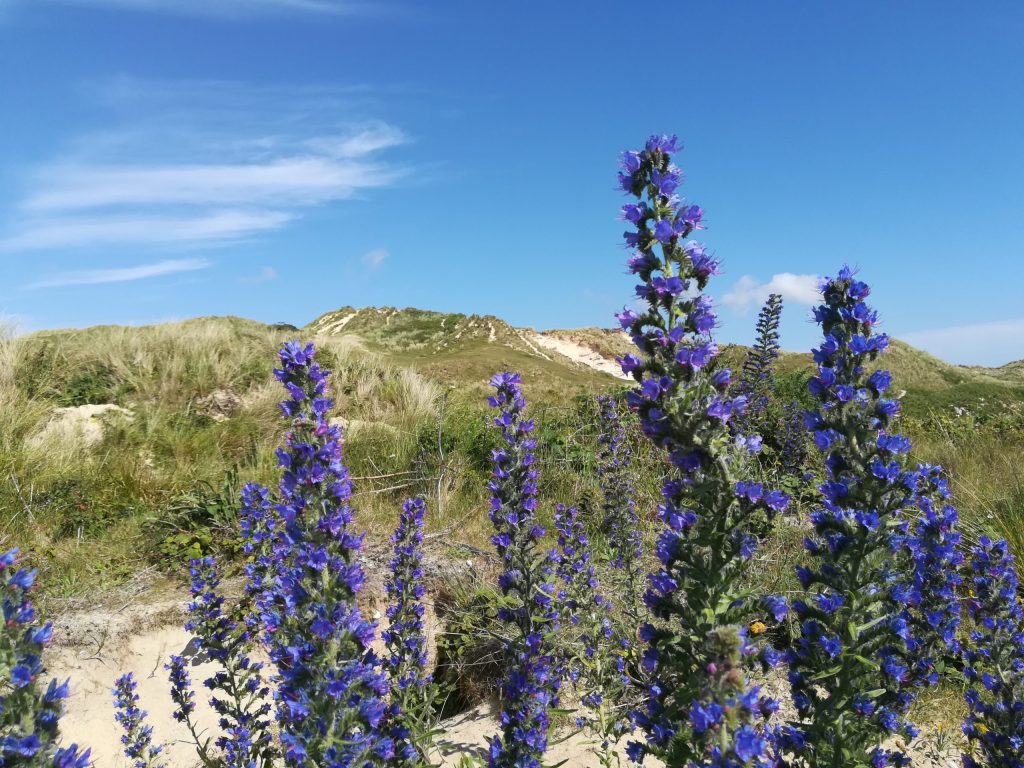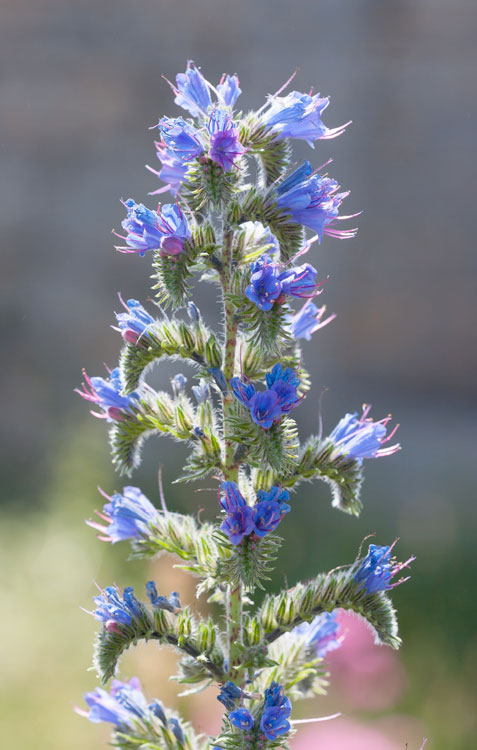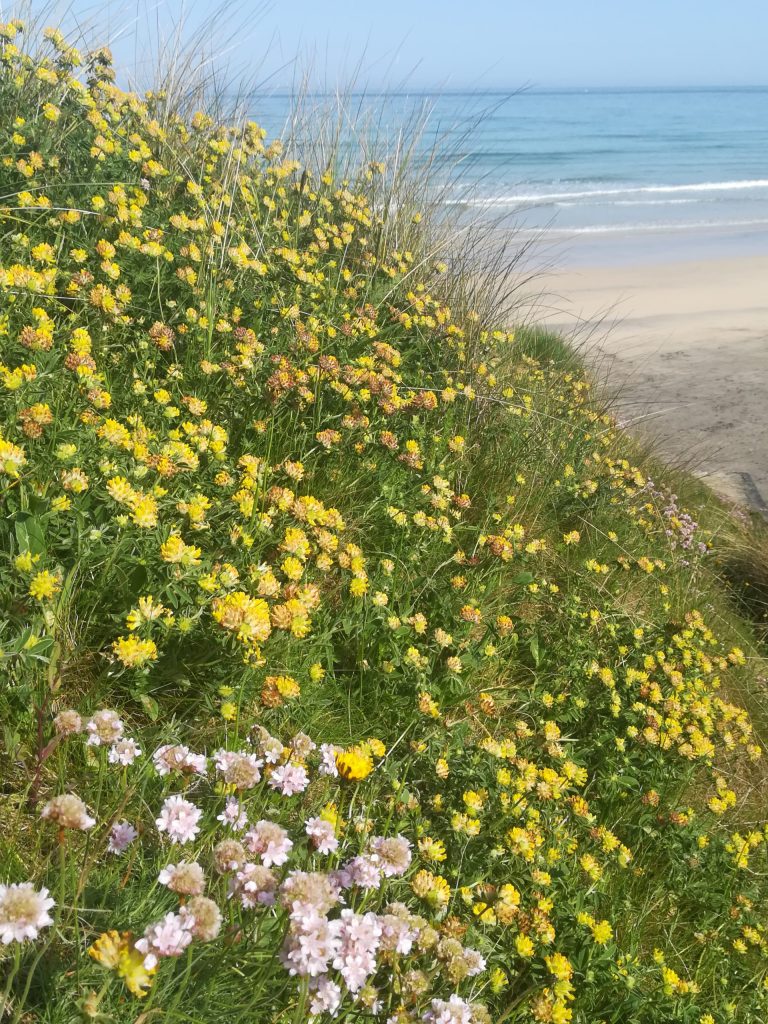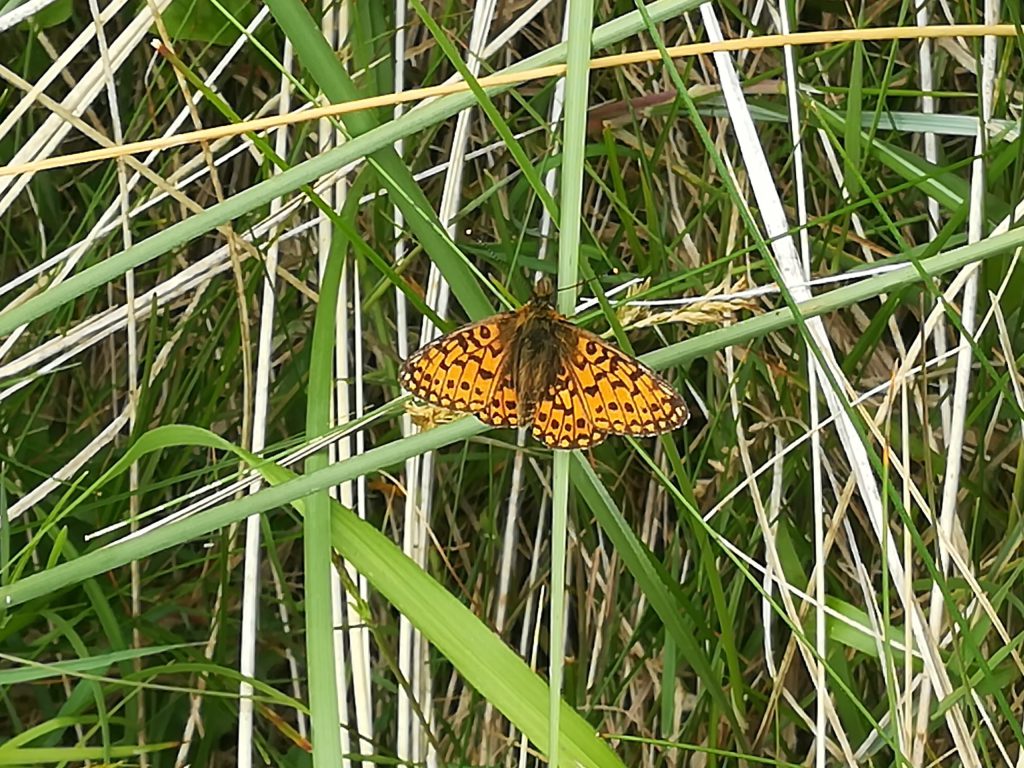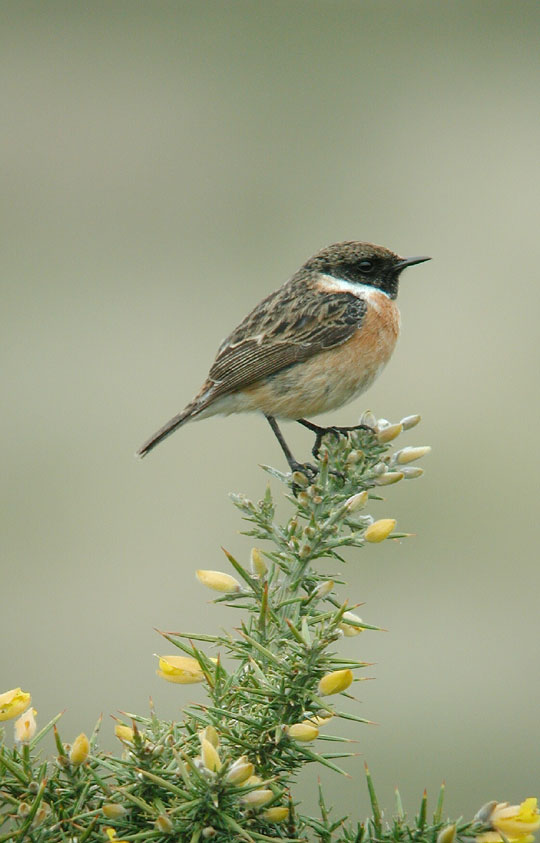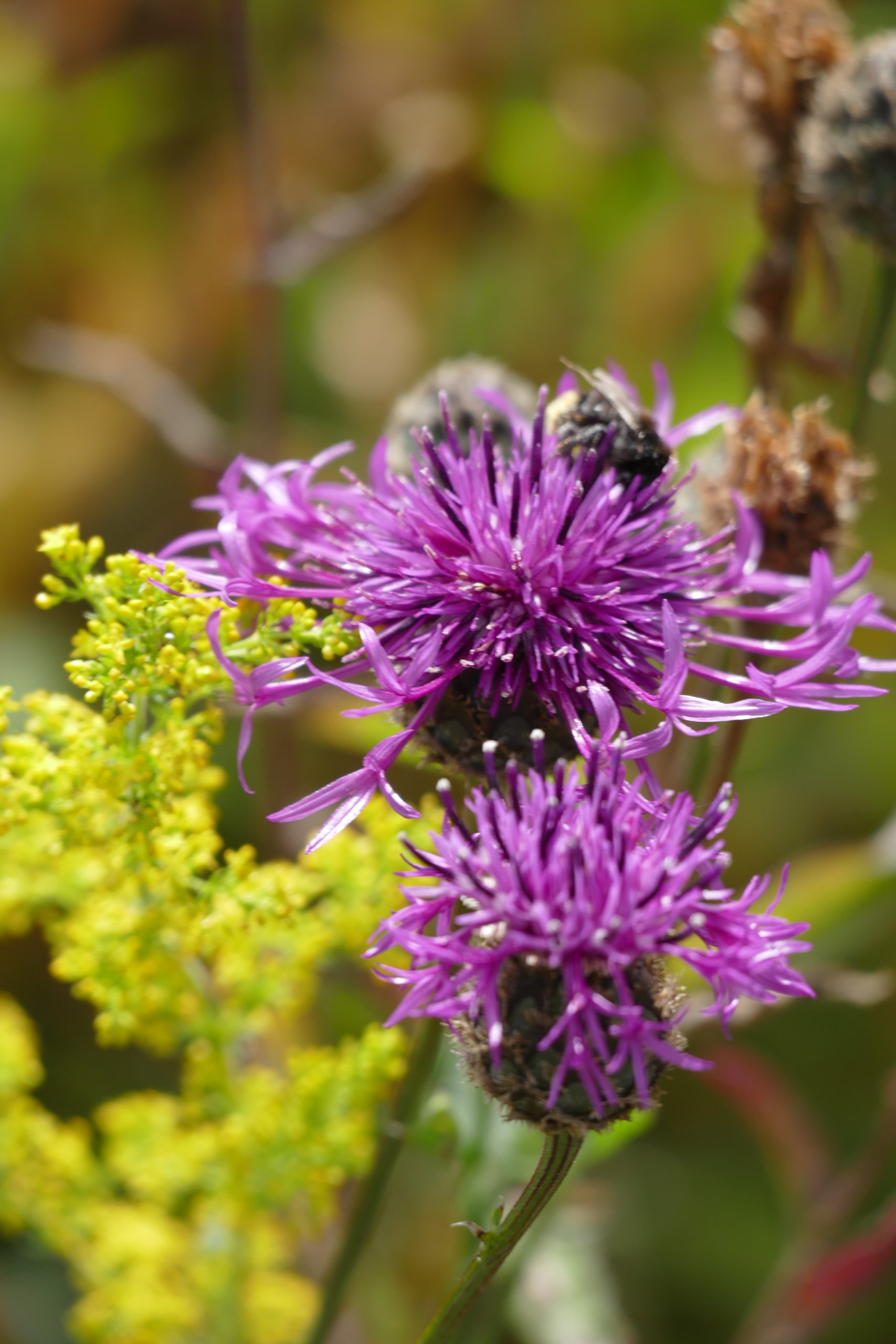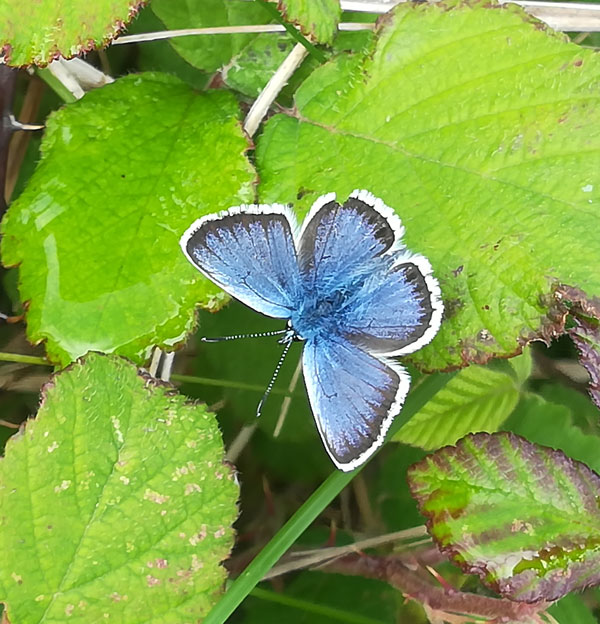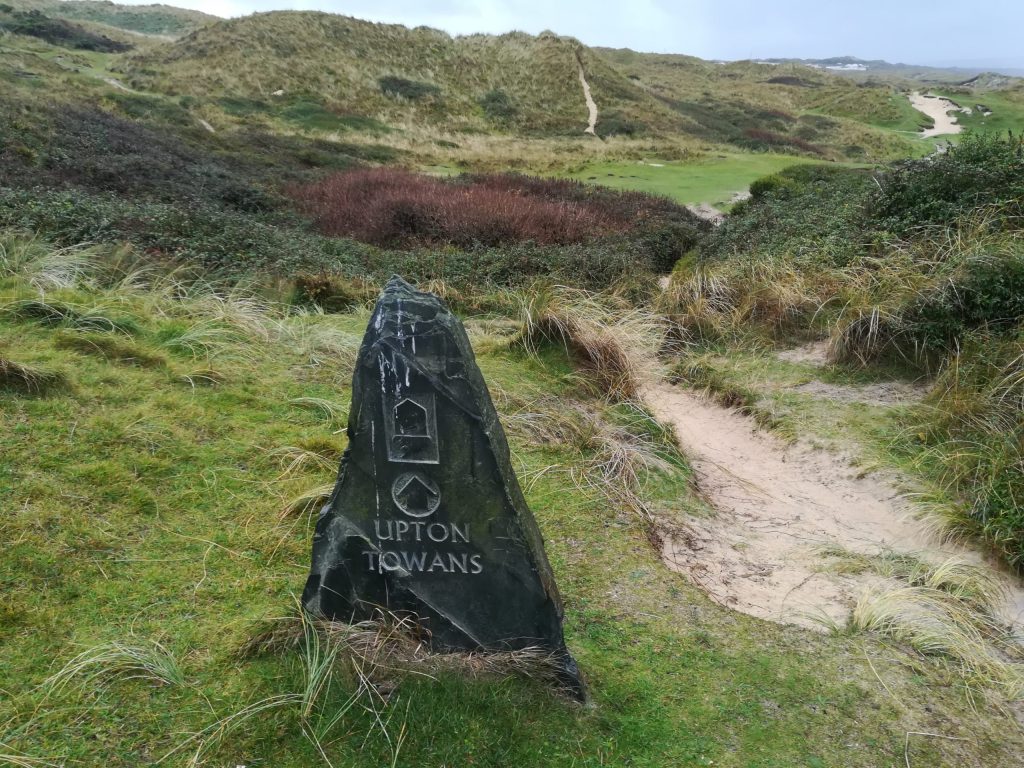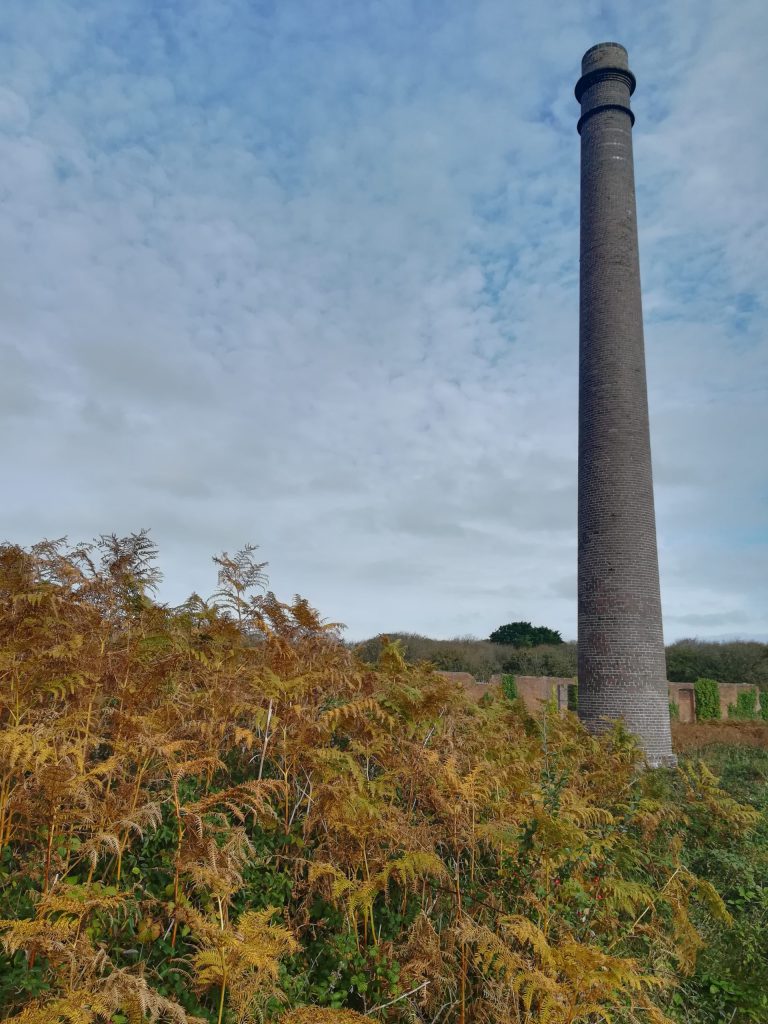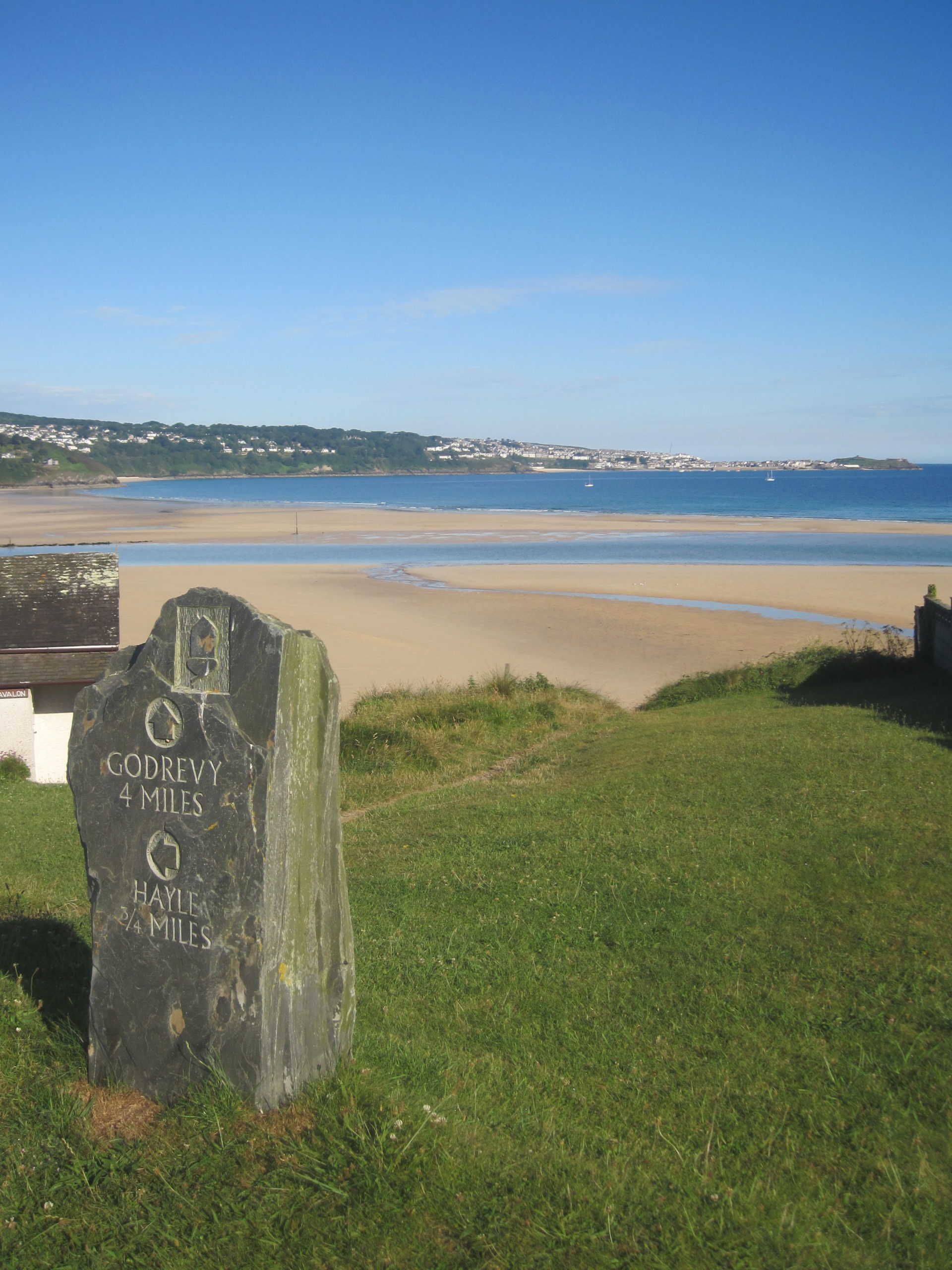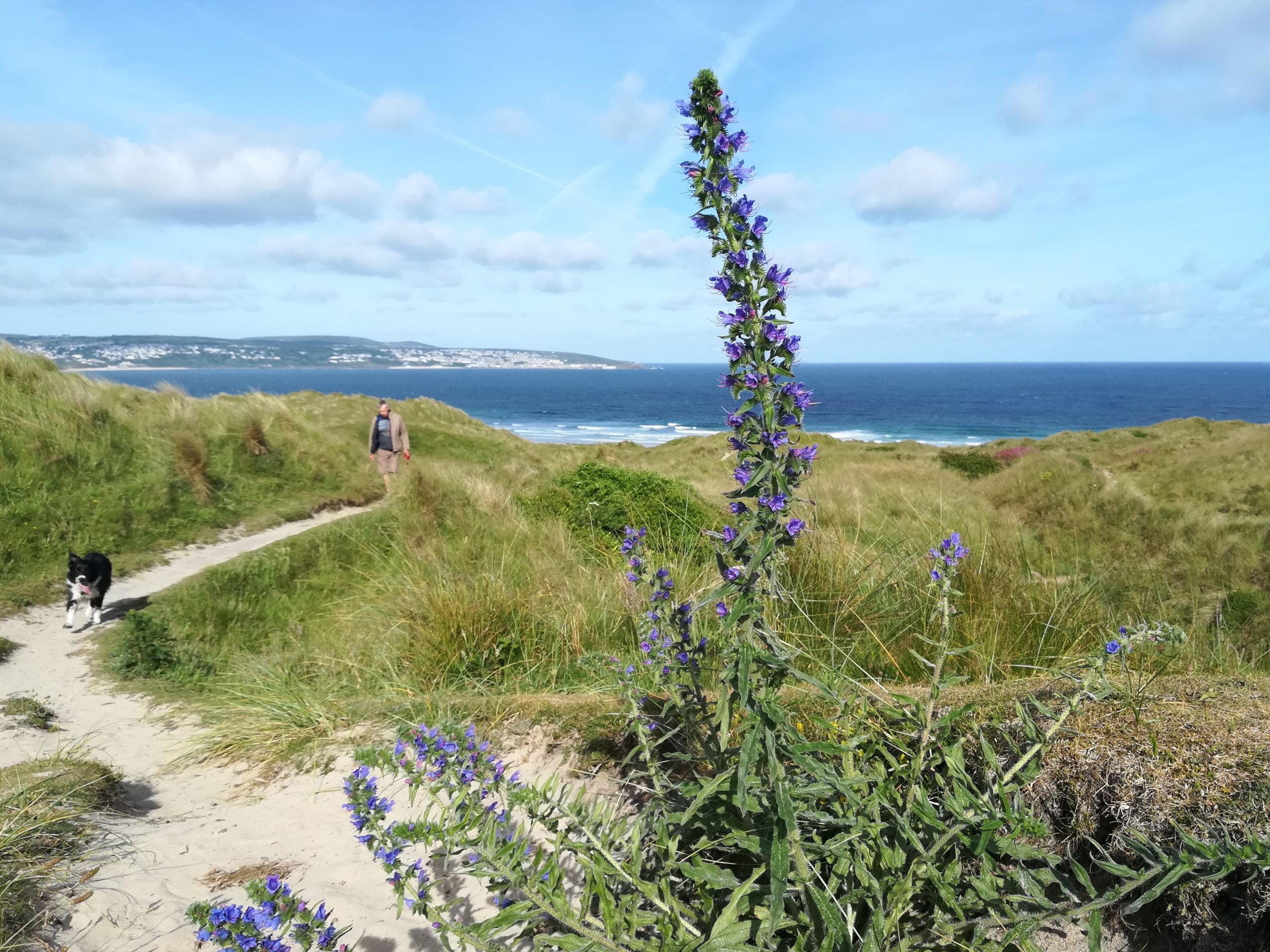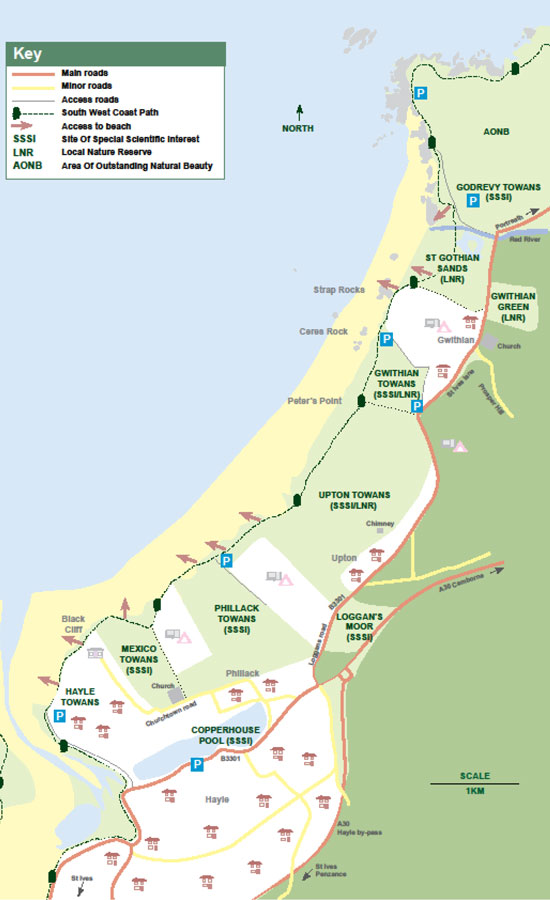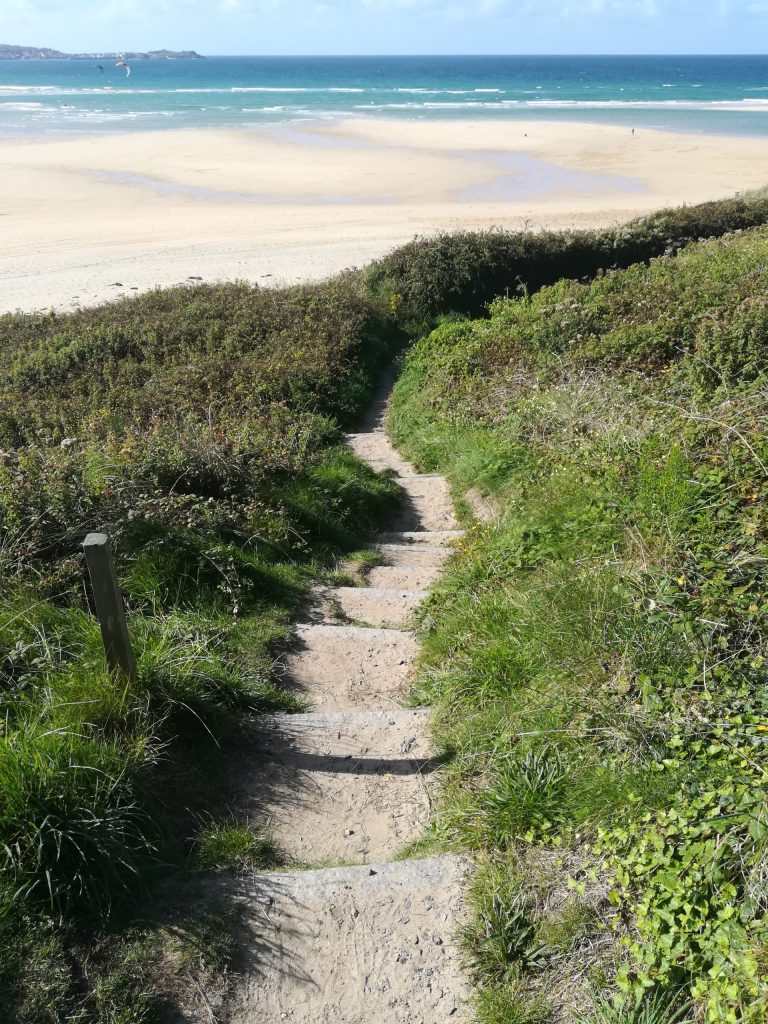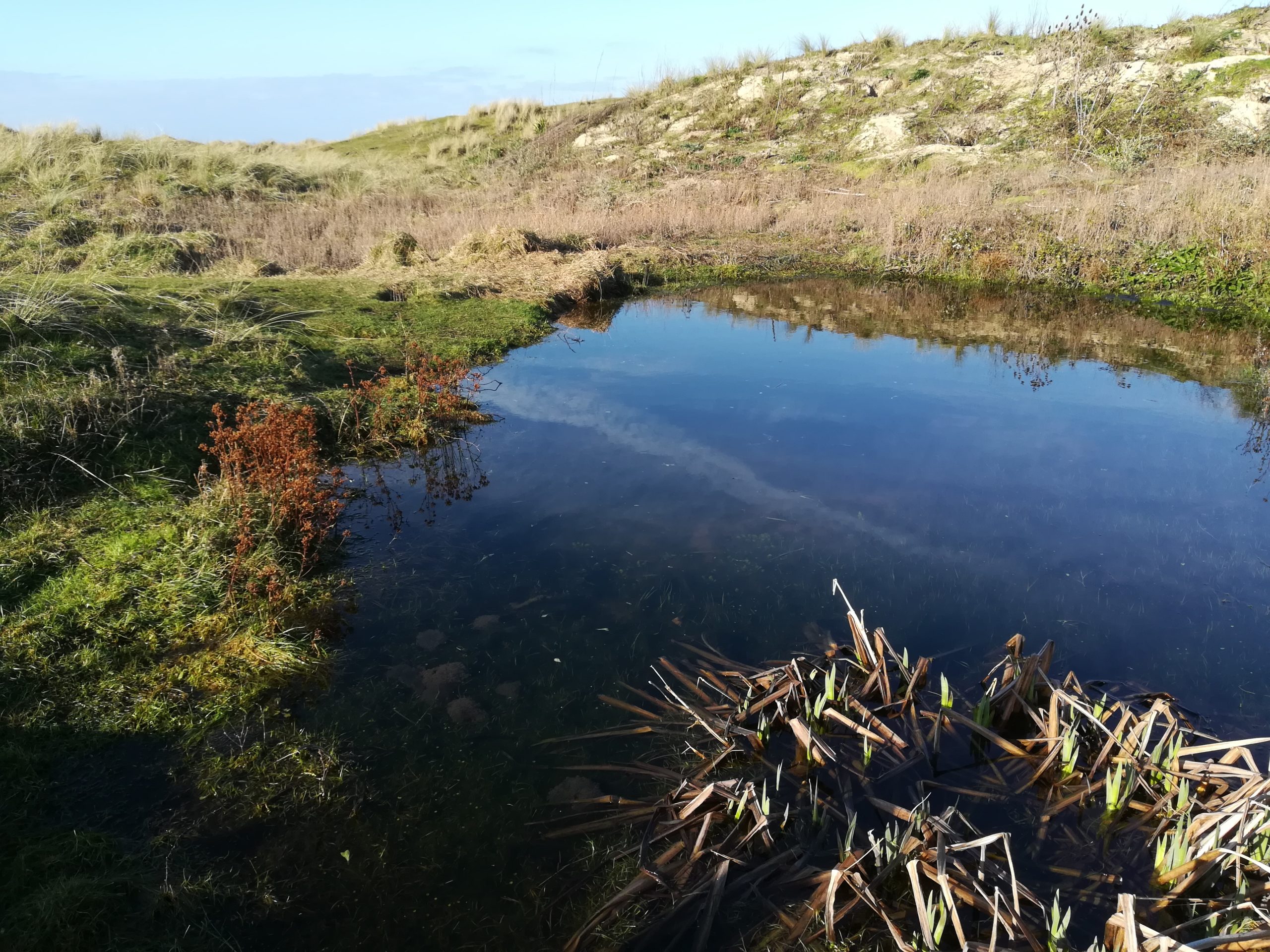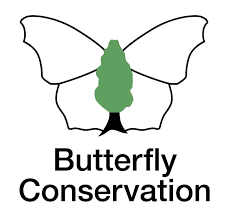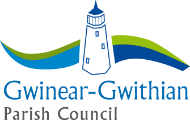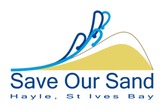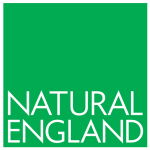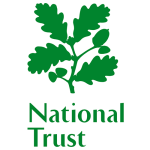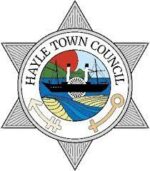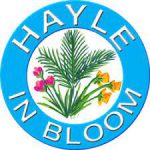The Towans
The dunes mainly comprise broken-down seashells which have been blown onshore. They are calcareous and support lime-loving plants rarely found in Cornwall, which is predominantly made up of acidic granite.
Virtually the whole Towans area, from Hayle River mouth to the Red River, is designated as nationally important for wildlife – Gwithian to Mexico Towans Site of Special Scientific Interest (SSSI). Heading north from Godrevy car park, up around the headland and including Godrevy Warren, is another SSSI – Godrevy Head to St Agnes.
Two other areas of the Towans – Gwithian Green and St Gothian’s Sands – are designated as Local Nature Reserves (LNRs). All of these sites are also classified as County Wildlife Sites, a non-statutory designation given to habitats considered to be of local importance for wildlife.
So, a trip to the Towans to visit the beach or to walk your dog brings you into some of the most wildlife-rich habitat in the country.
Ranger's Ramblings
Between 2001 and 2023, Towans Ranger Martin Rule contributed regular articles to St Ives Local magazine.
Flora
The Towans is the richest botanical site west of the River Fal, supporting a quarter of all the plant species ever recorded in Cornwall. Notable plants discovered by Cornish botanist Dr Colin French in recent years have included Irish sorrel at Gwithian Towans and a rare variety of horsetail at Gwithian Green.
In summer, parts of the Towans are carpeted in purple thyme, and yellow and orange bird’s trefoil. Viper’s bugloss adds a striking blue splash, especially around disturbed ground like rabbit burrows. Bright pink pyramidal orchids can be spotted blooming among the marram grass, and spiky sea holly near the seashore.
Fauna
Many rare and scarce invertebrates also occur on the Towans, including rare butterfly species, most notably the silver-studded blue, which occurs more abundantly here than virtually anywhere else in the country.
At the right place and the right time of year, and in sunny weather, you can stroll through the dunes with hundreds of these beautiful butterflies at your feet! Bird’s foot trefoil is an important foodplant for the caterpillars of this butterfly, while ragwort – another abundant Towans plant – is the favourite food of the black and yellow caterpillars of the cinnabar moth.
Skylark, linnet and stonechat are among the scarce bird species which breed here, and the dunes provide home to reptiles also, in particular adders and common lizards – both protected species.
Archaeology
Yet it’s not all about wildlife. The human history of the Towans is fascinating and varied, and today’s peace and quiet belies its previous life.
The discovery of prehistoric tools on a farm in Gwithian in the 1940s led to the area being recognised as a place of national archaeological significance. Over the next 20 years, evidence was uncovered of life in Gwithian across 1,000 years: wooden bowls and pottery shards; Bronze Age field boundaries; the outlines of Roman buildings and a medieval manor house.
Dunes became a dominant feature of the landscape in the 12th century, when massive quantities of blown sand buried a small chapel, and preserved ancient fields and artefacts.
Tin streaming took place along the Red River, and a few mines were established in the Towans: there is evidence of one of these, Wheal Emily, within a cliff face close to Gwithian beach.
From the late 19th century, areas of the Towans were given over to the manufacture of dynamite. The National Explosives Works employed more than 1,500 people during the First World War, and the remains of blast banks, tracks and other structures can clearly be seen at Upton Towans, which became known as “Dynamite Towans”.
The Towans Today
Since the mid-20th century, the Towans and adjacent beaches have become extremely popular destinations for visitors throughout the year, for a wide range of activities from dog walking to swimming and surfing.
Many tourism-based businesses have developed here, making the area second only to Newquay in terms of the amount of accommodation available to holidaymakers in Cornwall.
This huge seasonal increase in population has brought challenges – including the potential for detrimental effects on wildlife and the risk of over-development – but the Towans is still a special place.
Support Us
We are grateful to all the organisations which help fund Friends of the Towans or contribute to our work. We are always looking for additional support. If you are interested in giving offering your time, skills or expertise, please contact us
If you would like to donate to us please use the blue button on the right.
Contact
If you’d like to get involved, just phone us, email us, or contact us via our social media.
